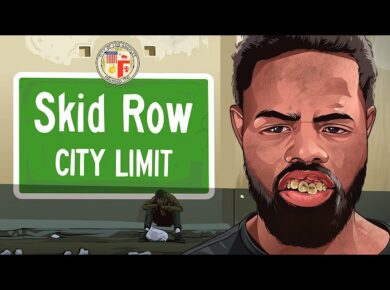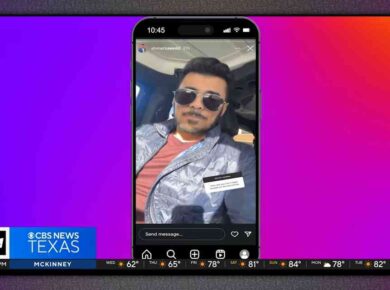TikTok’s popularity has brought new attention to how users perform and share pranks online. In 2025, a rise in harmful incidents has forced the platform to introduce updated rules for prank content. These rules set new limits on what creators can do, aiming to protect both users and the public from real-world consequences.
Understanding these changes is now essential for anyone posting prank videos. The revised guidelines affect how creators plan, film, and share content, shaping what audiences see on their feeds. For more on how different age groups adapt to these changes, see Gen Z and Millennials social media habits 2025.
Creators and viewers alike need to know where the boundaries are and why these limits matter. The new rules seek to balance creativity with public safety, and they signal a shift in how social platforms handle responsibility.
Understanding the 2025 TikTok Prank Rules
The updated TikTok policies for 2025 set new standards for prank content. These changes address both creator responsibility and the social impact of viral trends. By clarifying what qualifies as a prank and establishing clear boundaries, TikTok promotes safer interactions on its platform. Below, you’ll find a detailed look at how pranks are now defined, which acts are restricted, and what pushed TikTok to create stricter rules.
Definition of Pranks Under New Guidelines
TikTok now provides a strict definition for pranks. The guidelines state that a prank is any content where one or more people attempt to surprise, confuse, or trick others—intentionally eliciting a reaction for entertainment.
Prank content falls under increased scrutiny when:
- The action causes emotional or physical distress.
- The video captures non-consenting parties, especially minors.
- There is a risk of property damage or public disruption.
The rules also extend to virtual interactions, covering:
- Manipulation of digital communications to deceive others.
- Use of fake emergency scenarios.
- Feigned threats of harm, even as a joke.
TikTok holds creators accountable for ensuring all participants understand the staged nature of a prank, and for securing clear, recorded consent before posting any footage.
Restricted and Prohibited Prank Content
Some types of pranks are now outright banned or face heavy restrictions. TikTok lists the following as prohibited:
- Fake Emergencies: Includes calling fake “pranks” involving police, ambulances, or fire departments. These endanger resources and public safety.
- Assault or Physical Harm: Any prank involving pushing, hitting, tripping, or making someone fear injury is not allowed.
- Harassment, Bullying, or Intimidation: Pranks that single out individuals or groups for humiliation are banned.
- Unsafe Public Stunts: Blocking traffic, entering restricted spaces, or faking incidents in public are now removed.
- Consent Violations: Posting videos of strangers, children, or anyone without written permission, even if faces are blurred, can result in immediate removal.
TikTok reviews these videos quickly and may also apply penalties such as content removal or account suspension. Accounts with repeated or serious violations risk permanent bans, a trend also seen with other platforms, as discussed in the context of popular YouTubers banned permanently.
TikTok’s Motivation for Stricter Regulations
Several viral incidents in 2023 and 2024 led to harsh consequences. Some involved fake threats at schools, forcing lockdowns and triggering police involvement. Others caused injuries during staged “surprise” public pranks. Many schools responded with zero-tolerance policies, suspending or expelling students found sharing or participating in these videos.
Multiple law enforcement agencies reported increased calls tied to social media trends—diverting attention from real emergencies. The backlash grew after several high-profile cases made headlines, highlighting the risks when entertainment crosses the line into real-world chaos.
These events shaped TikTok’s rule changes. By closing loopholes and increasing enforcement, the platform aims to lower risk, protect the public, and restore trust. The ripple effect of these rules has sparked wider policy debates, including in the U.S. Congress, where new legislation like the Extend the TikTok Deadline Act addresses broader concerns about TikTok’s social impact.
The 2025 prank rules reflect not only TikTok’s commitment to safety but also a growing trend toward more responsible content creation across all major platforms.
Key Safety and Legal Risks in 2025
The rules for TikTok pranks in 2025 bring real consequences for anyone posting questionable content. Prank videos can cross the line from harmless fun to activities that harm others or break the law. Understanding the risks helps creators avoid costly mistakes. These risks affect not just personal reputation but also the future of digital content creation.
Social and Legal Ramifications for Creators
Breaking TikTok’s updated prank rules can lead to more than just temporary bans. Civil and criminal penalties are on the table for anyone who posts pranks that result in harm or significant disruption. For example, the so-called “Chromebook challenge,” where students threw school property as a joke, led to real damages. Some schools filed police reports, and families faced lawsuits to cover the repairs.
Pranks that escalate into violent home encounters—like staged home invasions—have become flashpoints. Homeowners sometimes believed they were facing genuine threats. In several cases, pranksters were charged with trespassing or assault, and some faced civil suits for emotional distress or property loss. These incidents show that a single video can spark both criminal charges (jail, probation, fines) and lawsuits seeking money for damages.
Creators should also consider the long-term impact on their online presence. Being named in lawsuits or featured in negative news reports can reduce brand deals and end sponsorships. Some creators have seen a permanent ban from platforms, along with damage to their public image. This is similar to the fate of some high-profile streamers, as covered in breakdowns of permanent bans and their real-world effects.
Disciplinary Actions by Schools and Authorities
Schools have responded to prank trends by increasing punishments for students who take part. A single TikTok prank can now result in suspension, expulsion, or even police involvement. In 2025, many districts work with local law enforcement to investigate social media events that disrupt learning or safety.
Law enforcement agencies are more likely to follow up on prank videos that involve threats, violence, or property damage. Posting about fake emergencies, dangerous stunts, or acts that frighten others can mean officers show up at your door. The consequences include criminal charges, school discipline, and court-ordered community service. Parents are often pulled into legal trouble if minors are involved.
Schools and authorities now track these incidents more closely due to pressure from the public and lawmakers. Reports show that the link between viral challenges and school discipline is stronger than ever. For more perspective on how social media trends impact different age groups—including students—visit the article on Gen Z and Millennials social media habits 2025.
Creators and students should think twice before filming or joining prank videos. The safety net that once existed is gone—real penalties can follow a single viral clip.
Content Moderation and Enforcement Mechanisms
TikTok’s stricter prank rules in 2025 come with new moderation and enforcement tools. The system now combines fast AI review, updated user-report flows, and direct actions against rule breakers. These changes make it harder for harmful prank content to slip through. They also force creators to think twice before posting risky material. Below is a closer look at the ban and suspension processes, along with new approaches to algorithmic detection and community reporting.
Ban and Account Suspension Policies
TikTok’s updated ban system puts more weight on repeat violations and harmful trends. Accounts caught sharing banned prank content now face a tiered response:
- First offense: Temporary content removal and warning, with details on what rule was broken.
- Repeat offenses: Multiple violations trigger short suspensions, often lasting a week.
- Serious or multiple infractions: Permanent account bans, loss of all content, and possible device bans.
What makes the 2025 policy different is the focus on intent and harm. For example, if a prank leads to public panic or targets minors, TikTok may skip straight to account termination. The platform also shares clear ban notification messages explaining the offense, so creators cannot blame outdated policies or confusion.
This approach mirrors tough standards seen on other platforms. On YouTube, high-profile cases show how platforms punish dangerous stunts and harassment. To learn how similar enforcement works elsewhere, review the list of biggest YouTubers who are permanently banned. TikTok now applies comparable logic: causing public harm or violating consent can end a creator’s account regardless of follower count.
Another shift in 2025 is demonetization. Accounts with violations lose eligibility for brand deals, payouts, and monetization features. These financial penalties hit large and small creators alike, sending a message that rule-breaking does not pay.
Algorithmic and Community Reporting Changes
TikTok’s content enforcement combines new algorithmic detection with a stronger community reporting system. In 2025, AI models flag prank content faster by checking for specific sounds, keywords, and visual cues. For example:
- Automated scans flag clips with suspicious actions—like fake emergencies or public panic—even if the video has not yet gone viral.
- The algorithm checks for repeated uploads of similar pranks, targeting trends before they grow.
Flagged content is instantly reviewed by human moderators. If the system sees a pattern—such as a creator repeatedly using harmful prank formats—the account is downranked in user feeds or fully removed. Details about TikTok’s approach to AI-driven moderation are explained in How Does TikTok Moderate Content? Insights on AI.
Community flagging has also improved. Users now get more options for reporting prank videos, such as:
- “Harassment or Bullying”
- “Non-consensual Acts”
- “Public Safety Risk”
Reports are prioritized based on volume and severity. When a group of users reports a video for the same violation, moderators step in more quickly. TikTok then provides feedback to those who reported, showing actions taken to build trust.
Transparency is a priority. A dedicated section—Transparency and Accountability Centers—explains how moderators review escalated accounts and describes the balance between AI and human input. The reporting process and outcomes are also detailed for anyone interested in safety measures, as described in TikTok’s own Reporting overview.
By connecting automated tools and user input, TikTok can catch harmful pranks before they spread widely. These changes help keep the experience safe for viewers and creators and set new standards for social platforms. For more on how creators adapt and avoid penalties, read insights on navigating influencer bans and digital reputation.
Best Practices for Safe and Responsible Pranking
Following TikTok’s new guidelines in 2025, creators need to adopt clear best practices to keep pranks ethical, creative, and fun. The line between entertainment and harm is now more defined, pushing the community to respect boundaries and prioritize safety. Below are practical ways to create engaging content that follows both platform rules and social expectations.
Consent and Ethical Standards in 2025
Consent stands at the center of pranking standards today. Every person who appears in a prank video must agree to participate, and that agreement should be documented before posting. Written or video consent offers protection for both the creator and the subjects. This prevents misunderstandings and legal problems.
Dignity and privacy matter as much as consent. Creators should never embarrass, expose, or frighten their subjects. It’s important to ask: Would I want this video posted if I were in their place? Pranks involving strangers or minors require even greater care, as accidental exposure can lead to unwanted attention or bullying.
Ethical trends for 2025 show more creators speaking openly about responsible pranking. Some now include behind-the-scenes clips where they explain consent and check in with their prank subjects. This boosts trust with viewers and builds a positive community reputation. Platforms also highlight creators who choose safer, thoughtful content by boosting their visibility and sometimes featuring them in educational campaigns.
Creators must take responsibility for the impact of their videos. They should monitor comments, remove harmful reactions, and address feedback from audiences. These steps maintain a safe space for viewers and keep content in line with TikTok’s latest requirements. For a broader view on managing an online career and community standards, see the guide to becoming a social media influencer in 2025.
Creative Alternatives to High-Risk Pranks
With high-risk stunts restricted, creators are turning to safer, more inventive prank formats that still entertain large audiences without crossing the line. These pranks focus on surprise and fun rather than shock or fear.
Consider these more engaging, rule-abiding alternatives:
- Reaction-based pranks: Light, unexpected interactions between friends—like harmless wordplay or playful misunderstandings.
- Reverse pranks: Let the “target” in on the joke ahead of time, then surprise viewers with their reaction to the camera, making the audience the actual subject.
- Food switch-ups: Serving a favorite dish with a mild twist (like colorful but safe food dye), then revealing the change.
- Mini scavenger hunts: Friends follow simple clues around the house or neighborhood for a surprise, turning the prank into a positive group activity.
TikTok has rewarded these creative ideas by featuring them on trending pages and limiting penalties for lighthearted, risk-free fun. One standout example is the rise of kindness pranks—where creators perform good deeds under the guise of a prank, leaving their subjects pleasantly surprised. These trends have gained positive attention and fostered more supportive content.
Creators who lead by example in safe pranking also help educate others. Some offer tutorials or “prank responsibly” advice, discussing what works and doesn’t, all while following current rules. Over time, these practices and models help shape a safer landscape for pranks and build trust across the creator community.
For a closer look at how top influencers adapt their content while maintaining ethical standards, explore profiles such as the Comprehensive Profile of TikTok Influencer WinterKloudz. Their journey shows that creators can thrive while still respecting new rules and prioritizing safety.
Conclusion
The 2025 TikTok prank rules set clear standards that serve creators, audiences, and the wider community. These guidelines highlight the need for safety, legality, and respect in online interactions. By following these rules, creators reduce the risk of harm and support a healthier culture on social media. Responsible pranking now means putting consent and care first, while pushing creative boundaries within safe limits.
As TikTok continues to enforce these standards, creators who adapt will build trust and maintain strong reputations. The future of viral content depends on striking a balance between entertainment and responsibility. Thank you for reading—stay mindful, stay safe, and use your platform to inspire positive change. For more ways to protect your digital presence, explore tips on managing bans and community reputation in the guide to fixing shadowban on TikTok and Instagram.




